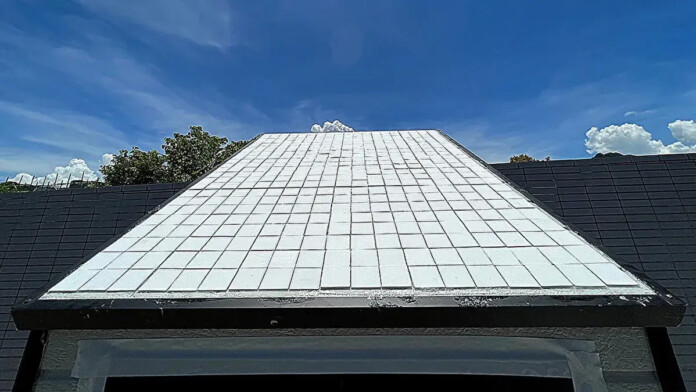Associate Professor Edwin Tso Chi-yan, a key researcher in the project, highlights the unique attributes of this cooling ceramic, including its advanced optical properties, colour stability, weather resistance, and mechanical strength. A notable feature is its ability to suppress the Leidenfrost effect—a phenomenon where a liquid, upon contacting a surface significantly hotter than its boiling point, creates an insulating vapour layer preventing rapid boiling. This characteristic allows the cooling ceramic to maintain indoor coolness naturally, making it ideal for building construction.
In terms of manufacturing, cooling ceramic stands out for its simplicity and affordability. Made from common inorganic elements like alumina, it involves two primary processes: inversion and sintering. These steps do not require highly sophisticated equipment or costly materials, enabling cost-effective large-scale production. Moreover, the material exhibits exceptional fire resistance, capable of withstanding temperatures over 1,000°C—far exceeding the capacity of many traditional polymer or metal-based materials, which typically withstand up to 360°C.
The development of cooling ceramic also draws inspiration from nature, incorporating two unique properties. The first mimics the exceptional brightness of Cyphochilus beetles, while the second is based on Mie scattering, a light-scattering phenomenon. These natural properties enable the material to scatter nearly all sunlight wavelengths, achieving an impressive solar reflectivity of 99.6%, one of the highest values on record. When applied to structures like roofs, cooling ceramic can significantly reduce the need for space cooling, cutting down electricity usage by 20% and thereby reducing greenhouse gas emissions.
This innovation represents a significant step forward in sustainable construction. As global temperatures rise, materials like cooling ceramic that reduce electricity consumption, lower greenhouse gas emissions, and alleviate urban heat island effects become increasingly important.
This material’s nature-inspired properties and environmental benefits position it as a key player in the pursuit of sustainable building practices. Cooling ceramics from the City University of Hong Kong could revolutionize building design, emphasizing eco-friendliness and efficiency in an era increasingly focused on environmental sustainability.










